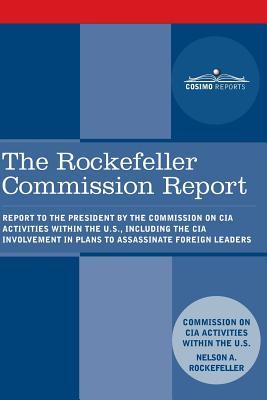"Allegations that the CIA had been involved in plans to assassinate certain leaders of foreign countries came to the Commission's attention... The Commission's staff began the required inquiry, but time did not permit a full investigation before this report was due. The President therefore requested that the materials in the possession of the Commission which bear on these allegations be turned over to him. This has been done." --From the Preface of the The Rockefeller Commission Report, 1975
The Central Intelligence Agency, created in 1947 by President Harry S. Truman to become the US foreign intelligence service, has experienced over the years many controversies on how it conducted its operations. As a result, hereof, the US government initiated several inquiries into the CIA and produced reports on their actions.
One of those reports is the Report to the President by the COMMISSION ON CIA ACTIVITIES WITHIN THE U.S--a.k.a. The Rockefeller Commission Report--of 1975. This commission was set up by President Gerald Ford to investigate the CIA's activities in the 1960s, when it allegedly conducted illegal domestic activities, such as experiments on US citizens and surveillance of American dissident groups. Chairman of this Commission was Nelson A. Rockefeller (1908-1979), Vice President under President Ford. When this report was released, many found it a "whitewash."
However, over forty years later, in February 2016, The Rockefeller Commission Report suddenly became hot news when it became known that the Ford White House had altered the final Rockefeller Commission report and had removed an entire section on CIA assassination plots of foreign leaders, such as on Cuban President Fidel Castro, Congolese Prime Minister Patrice Lumumba, and President Sukarno of Indonesia (this section is re-inserted in this publication). It turned out that White House staff, including then-deputy assistant to the President, Richard Cheney (who later became Vice President under President George W. Bush), had edited this report, making it effectively no longer an independent investigation. This saga shows how government reports can regain historical importance and that in the end, no one can outrun the truth.
Students of intelligence gathering, politicians, journalists, and anyone interested in the history of the CIA and US national security will find this vital background reading.
